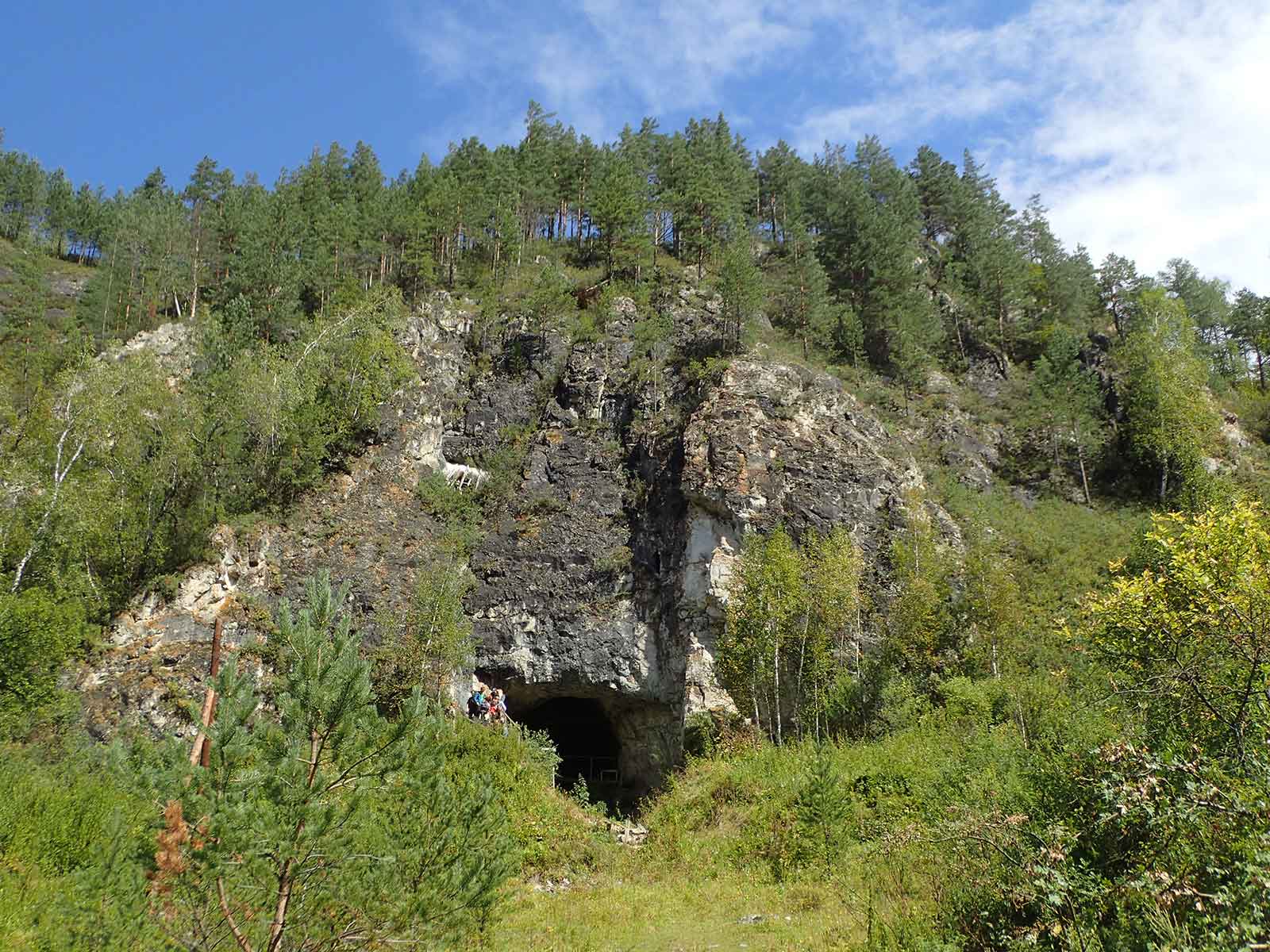 |
| Denisova Cave, Altai Mtns., Siberia |
While its DNA has been confidently identified, the true age is unknown because it is too old to radiocarbon date. Additionally, this fragment is quite small and too incomplete, and so it cannot be used to determine whether other hominin skeleton fragments found are Denisovan or not. The only way these can also be identified is through DNA analysis, which is often difficult to do on samples so ancient.
With the sequencing of both the Neandertal and the Denisovan genomes, in 2010 paleogeneticist Svante Pääbo and his team were about to make an astounding discovery about modern people across the globe when they compared their DNA to these archaic humans. They found that 2.5% of the DNA of modern Europeans and Asians has been inherited from Neandertals, and that around an additional 5% of the DNA of modern Melanesians has been inherited from Denisovans. This was clear evidence that our ancestors had socialized and interbred with other species of humans living at the same time in prehistory.
Today, anthropologists and geneticists are still waiting to find a more complete portion of a Denisovan skeleton. The hominin’s genome has much to say about who it was but seeing a complete skeleton will allow the world to visualize them. This can provide many other clues to how they lived and acclimated to their world. For now, they will have to continue to rely on the few Denisovan skeletal fragments unearthed in Siberia.
No comments:
Post a Comment